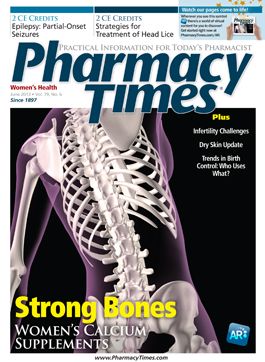Pharmacy Programs Can Reduce Hospital Readmissions
Avoiding adverse medication events through prevention programs may help to lower hospital readmission rates.

Avoiding adverse medication events through prevention programs may help to lower hospital readmission rates.
While the ability to predict which patients are at high risk for readmission is not an exact science, numerous studies have identified that adverse medication events are at the very core of the readmission problem.1-3 This includes patient nonadherence to prescribed drug therapy, which by itself leads to treatment failures and wasted resources costing $150 billion annually.4 A study by Budnitz et al identified the drugs involved in 88.3% of emergency hospital admissions of older adults caused by adverse drug events: hematologic, endocrine, cardiovascular, central nervous system, and anti-infective agents.3 Nearly two-thirds of the hospitalizations were due to unintentional drug overdoses. Just 4 types of medications—warfarin, insulin, oral antiplatelet agents, and oral hypoglycemic agents—together accounted for 7 in 10 of the emergency hospitalizations.
Findings such as these combined with the new penalties for hospitals with high readmission rates have created a niche for external programs offered by community pharmacies. For example, Walgreens offers WellTransitions, which has community pharmacists working onsite in hospitals, in collaboration with hospital pharmacists and clinical health care team members, to align prescription therapy, deliver discharge medications to the bedside, counsel patients about their drug therapy, and follow up with patients post discharge. Working primarily in the outpatient setting, CVS Caremark also offers an integrated readmission prevention program for its members in partnership with Dovetail Health, a care management company in Massachusetts. Using risk stratification and predictive modeling to identify high-risk patients, Dovetail provides high-risk patients with in-home consultation with a pharmacist shortly after discharge to help manage drug therapy for acute and chronic illnesses and to coordinate care. Moderate risk patients receive similar benefits via telephone support.
However, it may be more desirable and profitable for hospitals to invest in their own internal pharmacies to develop similar readmission prevention programs staffed with one or more hospital-employed community liaison pharmacists and coordinated with discharge planning and home care nurses. Hospital-run community liaison programs have been in existence for more than a decade in countries such as Australia5 and have become more prevalent in the United States in recent years. The community liaison pharmacist provides a link between hospital care and the home, as well as between different healthcare providers, thereby minimizing admission to the hospital due to medication mismanagement and promoting appropriate allocation of healthcare resources.5
An abundance of literature supports the success of hospital-run programs, citing measurable reductions in hospital readmission rates, prescribing errors, drug-related discrepancies, drug administration errors, and overall morbidity and mortality for certain conditions.5-7 The studies also document improvements in patient satisfaction and health outcomes. Thus, hospitals should not be tentative in their pursuit of such a program, be it hospital driven or externally driven. So if you don’t currently employ a community liaison program, now is an opportune time to garner interest and support from leadership.
Dr. Gaunt is a medication safety analyst and the editor of ISMP Medication Safety Alert! Community/ Ambulatory Care Edition.
References:
1. Forster AJ, Murff HJ, Peterson JF, et al. Adverse drug events occurring following hospital discharge. J Gen Intern Med. 2006;20(4):317-323.
2. Davies EC, Green CF, Mottram DR, Rowe PH, Pirohamed M. Emergency re-admissions to hospital due to adverse drug reactions within 1 year of the index admission. Br J Clin Pharmacol. 2010;70(5):749-755.
3. Budnitz DS, Lovegrove MC, Shehab N, Richards CL. Emergency hospitalizations for adverse drug events in older Americans. N Engl J Med. 2011;365:2002-2012.
4. Erickson J. The cost of medication noncompliance. J Am Assoc Preferred Provider Organ. 1993:3(2):33-34,38-40.
5. Ronis A, Higgins G, Wheatley W, et al. SHPA Standards of practice for the community liaison pharmacist. Aust J Hosp Pharm. 1996;26(5):570-572.
6. Brookes K, Scott MG, McConnell JB. The benefits of a hospital-based community services liaison pharmacist. Pharm World Sci. 2000;22(2):33-38.
7. Hanlon JT, Lindblad CI, Gray SL. Can clinical pharmacy services have a positive impact on drug-related problems and health outcomes in community-based older adults? Am J Geriatr Pharmacother. 2004;2(1):3-13.

